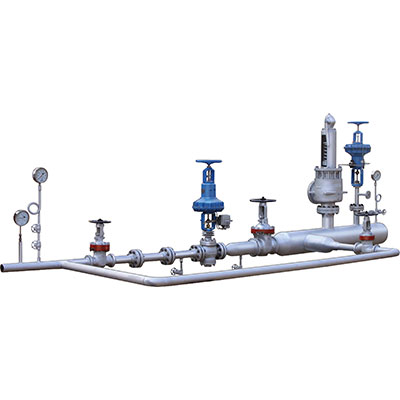Pressure reducing & de-superheating stations are used to reduce pressure and de-superheat the steam at the exhaust of turbine or where the turbine is bye passed. The pressure control loop is same as a pressure reducing station. In addition to that, there is a temperature control loop, desuperheating station (waterline), through a Fixed Nozzle Desuperheater (FND) / Variable Nozzle Desuperheater (VND)/ mini cooler.

The temperature control loop consists of Temperature sensor, temperature transmitter and PID controller. Desuperheater (waterline) connection is made to the PRDS valve; there are two types of water connections in the PRDS valve:
- Top Entry PRDS
- Bottom Entry PRDS
The Pressure reducing is done as with the help of the Pressure control loop in the same manner as for the PRS. In the temperature control loop, the temperature sensor senses the temperature which is read in the temperature transmitter and the feedback is given to the water control valve of the waterline.
The temperature transmitter sends the signal to the PID controller and this in turn sends the feedback signal to the water control valve which controls the flow of the water from the waterline reaching the PRDS valve, and water is sprayed in to the PRDS valve which mixes with the steam, hence reducing the temperature of the steam.